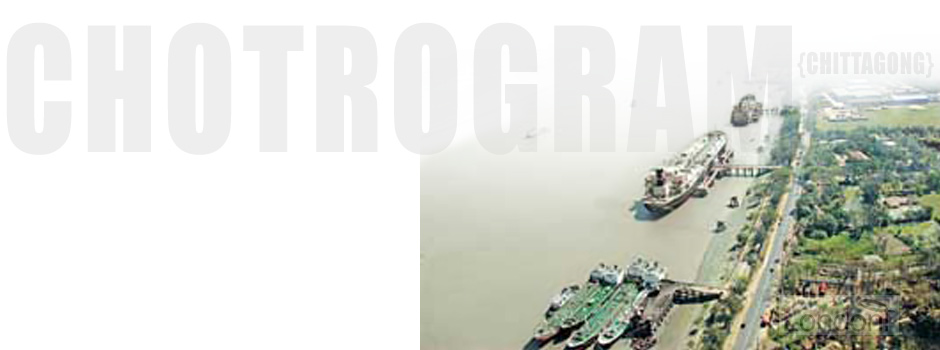
Map of Chittagong
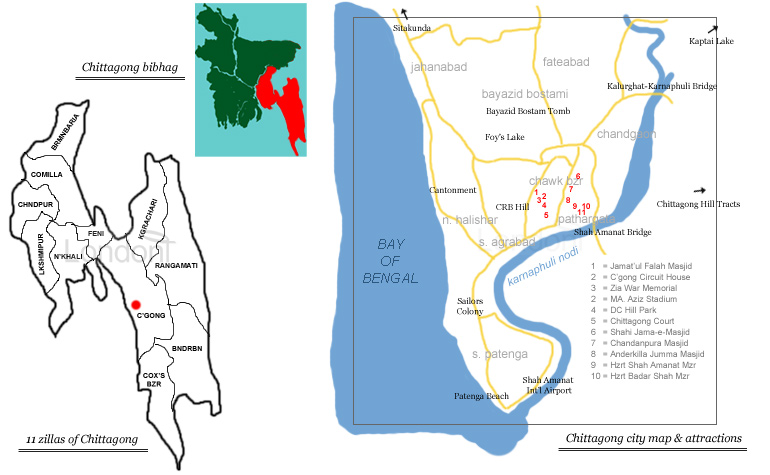
Chotrogram / Chittagong from the air!
-
Origin of 'Chittagong / Chotrogram' name
Various theories regarding the origin of the name of Chittagong and Chotrogram.
Locals say the word Chittagong originated from chattagram meaning small village. Some people believe that the earthen lamp (chati) of their guardian saint, Pir Badr Shah, lighted on his first landing in this abode of jinns and fairies to scare them away, gave the name of Chatigaon. Others believe that the name is derived from Chavatigrama, which is a very ancient name of non-Aryan origin and which later became Chatigam. Some writers think that the area was originally inhabited by a class of people known as Chattas from which the district received its name – though there's no evidence of the settlement of these people in the district in ancient time.
Another theory suggests that the name Chatigan originated from Arabic words 'shat' (delta) conjoined with 'jam' (the Ganges). It was supposed to be a name given by the Arabs meaning the city at the mouth of the Ganges. While others believe the name is a corruption of the Arakanese phrase tsi-tsi-gong ('war should never be fought') inscribed on a tablet brought by an invading Buddhist army.
Called various other names
The name of the district is pronounced and written variously by different writers while the port town of Chittagong has been mentioned by some sources in altogether different names, for example 'Thua Samandar' by Arab geographers, 'Fathabad' (Place of victory) by Prince Nusrat Shah, 'Porto Grande' (Great Port) by Portuguese, 'Hoofstadt' (Chief Port) by Dutch, and 'Islamabad' (Land of Islam) by Mughals.
Early history: Buddhist and Hindu influence
Chittagong's early history not clear. It's been a seaport since ancient times and has been consistently fought over. Much of its history is blended with the history of its neighbouring regions. Relation between Chittagong and Burma, especially its province Arakan, is as old as the history of the district. Repeated Arakanese aggressions has had huge influence in the course of its history.
Burmese chronicles speak of a long line of kings ruling over the region of Arakan, which included Chittagong in the 6th and 7th century. Chittagong was a stronghold of Buddhist Mahayanism and Hindu Tantricism and was considered a notable centre of religion and learning.
It is only with the advent of the Muslims to the region in 13th century does Chittagong's history becomes more clear.
1330: Afghan Muslim rule
Chittagong attracted the attention of the outside world from a very early date. The Arab contact with Chittagong goes as far back as the 9th century with the trade and cultural relation between the two places. In 1154 famous Arab Muslim geographer Muhammad al-Idrisi mentioned of a busy shipping route between Basra in Iraq and Chittagong, connecting it with the Abbasid capital of Baghdad.
The city of Chittagong attracted the attention of the outside world from a very early date. The Arabs knew its port in the 9th century AD.
De Barros, the first of the great Portuguese chroniclers of Asia, described Chittagong in 1552 as 'the most famous and wealthy city of the kingdom of Bengal, by reason of its port at which meets the traffic of all that eastern region.'
In 1338 Fakhruddin Mubarak Shah, Sultan of Bengal of Turki origin, captured administrative city of Sonargaon and soon after occupied Chittagong. Sultan Fakhruddin annexed the region to his sultanate as a mulk (province). A number of sufi saints under Badruddin Allama (Badr Pir) had accompanied the sultan and a sufi named Shayda was appointed to rule over Chittagong.
The Muslim conquest brought new government, new people, new religion, new language in the area and moulded the society in a new form. The Sultan's rule witnessed the development of highways, notably that from Chandpur to Chittagong, and he adorned the town with many lavish mosques and tombs.
In 1345 Ibn Battuta, the famous Moroccan Islamic explorer, had passed through Chittagong during his global travels.
1538: Arkanese take over again, followed by Portuguese and Mughals
As the "the gateway to Bengal" under the sultanate and "the masterkey of the whole of the Magh Empire" under the Arakanese regime, the district of Chittagong often found itself divided between different rulers. This robbed the port town of Chittagong of much of its importance as a centre of political actions. As Chittagong was exposed to the danger of the Arakanese incursions from the south and the Portuguese plundering from the coast, the governors during the sultanate period felt it a necessity of shifting their seat of administration farther interior of the district.
By 1538 the Arakanese regained possession of Chittagong. From late 16th century to mid 17th century Chittagong was under the long and almost continuous rule of Arakanese kings. However, though Chittagong was politically a part of the Arakanese kingdom, culturally it remained a part of Bengal. Though the Arakanese practised Buddhism, they encourage the settlement of Hindu and Muslim cultures in the kingdom.
But by now the Portuguese were making inroads into Chittagong and dominate the area. The Portuguese and Arakanese fought against each other in 17th century. For the next 128 years Chittagong would become home to Portuguese and Magh pirates (a notorious name for Arakanese), thus becoming the first European colonial enclave in Bengal.
The Portuguese activities in Chittagong developed intensity during the Arakanese rule. The political side of their activities chiefly centres on the conflict between the Arakanese rulers and the Portuguese commanders. In the first quarter of the 17th century they organised themselves into a powerful band and founded an independent kingdom in Sandwip and in the thirties of that century they gained territorial concession in the mainland in exchange of their promised services to the Arakanese authorities. During this time, Chittagong earned notoriety as a centre of slave hunting expeditions and slave trade in which they took a leading part.
Chittagong port and city acquired global fame as a thriving centre for business and trade. Peace and order was only restored when the Mughals took over the area in 1666 led by commander Shayestha Khan and his son Buzurg Umed Khan.
The area came to be known as Islamabad (Land of Islam) and it made great economic progress. Much like the earlier Afghan rulers, the Mughals built mosques and made rich contribution to the architecture of the area and improved connections with the rest of Mughal Bengal.
1761: Rise of Calcutta due to British trading, and fight against new colonial ruler
The English acquisition of Diwani in 1761 practically ended the Mughal rule in Chittagong. During the 18th and 19th centuries Calcutta (now spelt Kolkata) gained ascendency due to the trading activities of its new colonial rulers the British East India Company.
Chittagong suffered and began to lose its importance in the region. It was occupied by Burmese troops shortly in First Anglo-Burmese War in 1824 and this threatened the British hold on Chittagong. The British increasingly grew active in the region and created educational institutions in Chittagong such as Chittagong Collegiate School and College (1836), and Chittagong College (1869).
Nevertheless, the period of British rule was characterised by the Indians wanting to free themselves from the colonial rule and Chittagong became a hotbed of revolt.
Sepoy Revolt of 1857
The 'Sepoy Revolt' of 1857 witnessed a gallant effort by the 34th Bengal Infantry Regiment, stationed at Chittagong, releasing prisoners from jail and marching along the borders of Hill Tippera into Sylhet and Cachar carrying three government elephants, ammunition and treasure. But they were either killed or captured by the Kuki scouts and the Sylhet Light Infantry, later known as the 10th Gurkha Rifles.
Chittagong gained prominence once again at the beginning of the 20th century after the Partition of Bengal in 1905 and the creation of the new province of Eastern Bengal and Assam. The construction of the Assam Bengal Railway (1892 - 1942) connected the port of Chittagong with its natural hinterland and Chittagong received a boost in development.
But the fight to free themselves from foreign oppressors continued. During the communal riots and massacre of Muslims throughout various parts of British India in 1925, the people of Chittagong supported the Khilafat and Non-Cooperation movements to lend support the Muslim leaders of Bengal who were fighting to uphold the interests of the Muslims.
'Master Da' Surya Sen and his band of young freedom fighters
At the same time guerrilla warfare was being carried out a group of Hindu youths led by 'Master Da' Suyra Sen. He formed a secret party known as the Republican Army and trained talented and brave youngsters in secret locations to carry out covet attacks on the British government and prominent people for several years. Couple of famous examples include the attack on the Armoury and the Magazine House of the Auxillary Corps and the occupation of telephone and telegraph offices by 700 youths on night of 18 April 1930 which led to the disconnection of all communications, and the …. by young woman Pritilata Waddedar…
Surya Sen was hanged on 12 January 1934 and this put an end to terrorist activities in Chittagong for a while.
The battle to free Chittagong area was nothing new. Throughout history Chittagong was the battleground of the neighbouring ambitious monarchs and foreign rulers. Be it the kings of south eastern Bengal and Arakan, the Bengal sultans, the Tripura rajas, Portuguese, Mughals, or British.
...The district is the meeting ground of various races and nationalities, each of which leaves a mark on the evolution of the society. Originally a land of animistic tribesmen, Chittagong attracted the Hindu Buddhist settlers from northern India and Mongoloid people from Burma. The Muslim Arabs and Persians and the Christian Portuguese used to visit Chittagong in connexion with trade and commerce and in many cases they made it their place of settlement. The martial races like the central Asians and the Afghans came to Chittagong either as soldiers or as government officials. As a matter of fact, Chittagong became a meeting ground of conflicting races, religions and nationalities. The opposing cultures finally gave birth to a homogeneous one. In fact, Chittagong as it stands today is not only geographically a compact area but culturally and linguistically it belongs to what is known as 'Chattagrami'.
1947: From British India to newly formed Pakistan
Attacked by Japanese during Second World War
During the Second World War (1939 - 1945), the British used Chittagong as an important military base. Consequently it became the target of Japanese attacks. The aerodrome at Patenga was bombarded for two successive days in April 1942 and again on the 20 and 24 December 1942. As a result Chittagong was declared a non-family area and the head-quarters of the Divisional Commissioner was shifted to Comilla, and that of the Assam Bengal Railway to Dhaka. All valuable government documents were shifted to Mymensingh.
The War transformed Chittagong from a sleepy little town to a place of great activity. The massive military presence of the allied forces, drawn mostly from Britain, Australia and America could be seen on the streets of Chittagong. Frequent air raids by the Japanese warplanes, blackouts at night, and the presence of refugees from areas occupied by the Japanese, all combined to transform city life. The War, though it helped some people to amass huge fortunes as military contractors, brought much misery in its wake for the people in general, as a result of the Great Famine of 1943. The famine, it is largely believed, was man-made, and was engineered by the British Government to force people to the army recruiting centres to give the Government much needed manpower.
After the war, rapid industrialisation and development saw the city grow beyond its previous municipal area, particularly in the southwest up to Patenga, where Chittagong International Airport is now located. The former villages of Halishahar, Askarabad and Agrabad became integrated into the city.
Bengalis mistreated in newly formed Pakistan
Having looted India for nearly 200 years, the British left it in 1947. But they split India into two countries: India and Pakistan. The new country of Pakistan was formed by two wings on either side of India, East Pakistan (present day Bangladesh) and West Pakistan (present day Pakistan).
The Chittagong Development Authority (CDA) was established by the Government of Pakistan in 1959 to manage the growth of the area. It drew up a master plan to be reviewed every five years to plan its urban development. Seven years later, in November 1966, University of Chittagong was established.
However, the evolution of East Bengal under the new Pakistani government was no different from the times of the British Empire. East Pakistan regressed economically and socially under the leadership of Pakistan, where power and investment was focussed in the western wing. For the Bengalis of 'Purbo' (East) Pakistan, they felt they had replaced one tyrant ruler with another.
After over two decades of misrule, East Bengal erupted once again. The city of Chittagong would play a pivotal role in this.
1971: Bangladesh Liberation War
Location of first public announcement of independence
The city of Chittagong played a major role during the Bangladesh Liberation War of 1971. It was in Kalurghat, Chittagong on 27 March 1971 that Major Ziaur Rahman made the first public announcement over radio from Swadhin Bangla Betar Kendra declaring Independence of Bangladesh.
During the nine months bloody war, the people of Chittagong carried out attacks on Pakistan Army and its collaborators, the Razakars, and prevented them access to the sea and reinforcement of troops and arms. The muktijuddhas (freedom fighters) in that area sank a good number of ships in and around the Karnaphuli River and blocked ports. In return, the Pakistani navy shelled the city.
Modern day
Pakistani troops surrendered on 16 December 1971, and Chittagong and rest of Bangladesh began the long road to healing. As the country's second biggest city after the capital Dhaka, and its major outlet to sea, Chittagong began a massive rehabilitation and reconstruction programmes as high priority. Within few years of the liberation war, Chittagong became operational both as a city and as a port.
Today, Chittagong and its surrounding areas are a major hotspot for tourists. Its hilly region has always been rich in primeval culture and this is still evident today in the social life of the tribesmen that still reside there.
-
Places of worship & mazars (shrine)
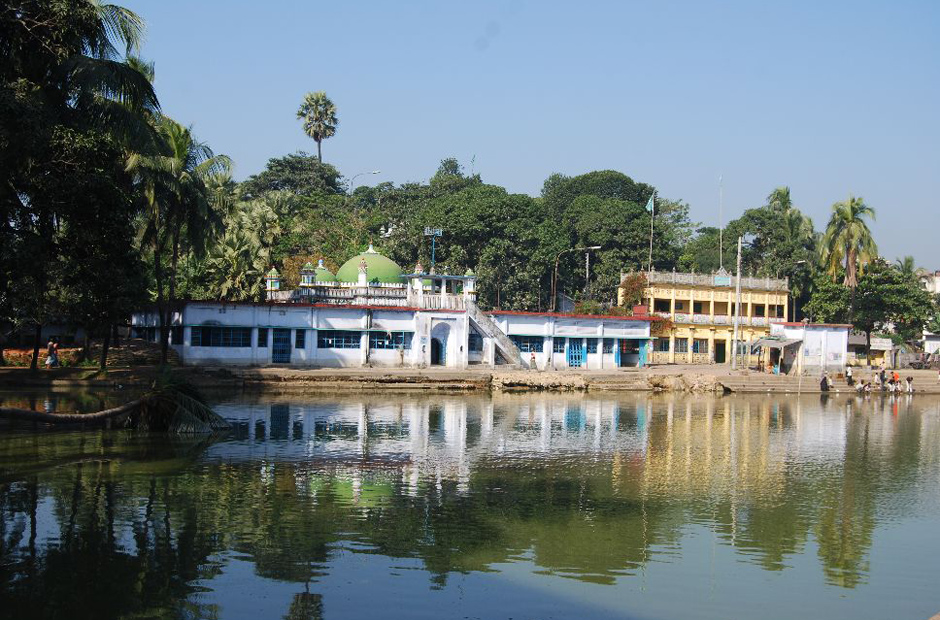
Bayazid Bostami Mazar: Bayazid Bastami also known as Abu Yazid Bistami or Tayfur Abu Yazid al-Bustami, (804-874CE) was a Persian Sufi born in Bostam,Iran. The name Bastami means "from the city of Bastam". Bayazid Bastami had great influence on Sufi mysticism and is considered to be one of the important early teachers of Sufi Islam. Bistami was the first to speak openly of "annihilation of the self in God" (fana fi 'Allah') and "subsistence through God" (baqa' bi 'Allah). His paradoxical sayings gained a wide circulation and soon exerted a captivating influence over the minds of students who aspired to understand the meaning of the wahdat al-wujud, Unity of Being. He died in 874CE and is buried either in the city of Bistam in north central Iran, or in Semnan, Iran. Interestingly enough, there is a shrine in Chittagong, Bangladesh that local people believe to be Bastami's tomb as well. This is unlikely to be true, as Bastami was never known to have visited Bangladesh. However, Sufi teachers were greatly influential in the spread of Islam in Bengal and this might explain the belief. The Islamic scholars of Bangladesh usually regard the tomb at Chittagong attributed to him as a jawab, or imitation.
Hazrat Shah Sufi Amanat Khan Dargah Sharif: Shah Amanat (R) a famous saint of Chittagong. Hadrat Shah Amanat is said to have come from Bihar Sharif. At Chittagong he lived in a cottage and accepted service as a pankha walla (hanging fan puller) in the Judge's Court. From the circumstantial evidence it appears that he was a man of the late 18th century. Shah Amanat lived a very simple life. His daily routine was to attend to his duties in the Court and to engage in prayers. No one knew that he was spiritually endowed nor did he pose to be such. His greatness was revealed through a Karamat (spiritual power with magical elements) which brought him to the limelight and people came to know that he was a darvish (saint) of a high order. When his spiritual attainments became known, he gave up his job and remained busy in meditation. He is ranked among the great saints of Chittagong. People visit his mazar specially to seek blessings in matters of litigation. Hadrat Shah Amanat lies buried in a mausoleum to the east of the Laldighi of Chittagong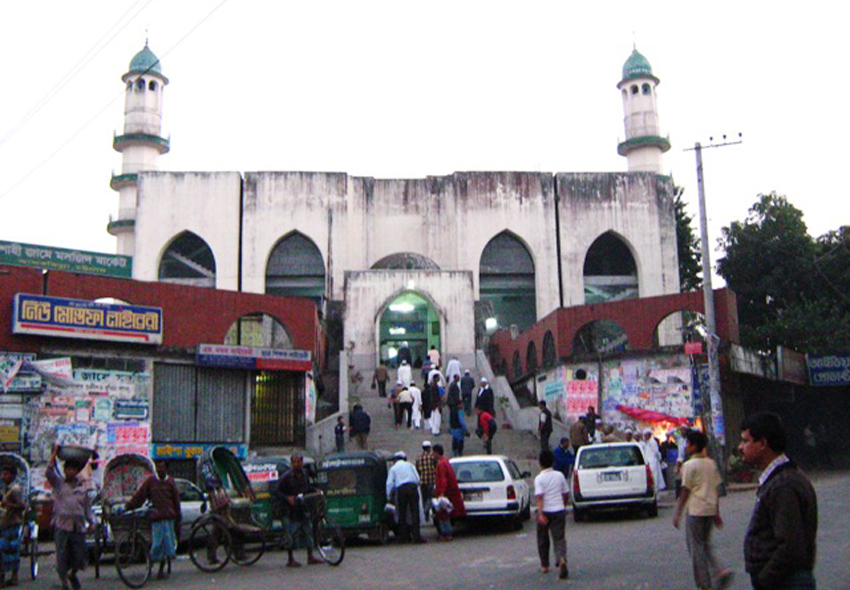
Anderkilla Jame Masjid: The chittagong jam-e- mosque is ancient and large Jame mosque. More than 10,000 people can say prayer together at the time of Jumah. It is the Principal Mosque in the city. it is Mosque is situated at Andarkilla , in center of the chittagong city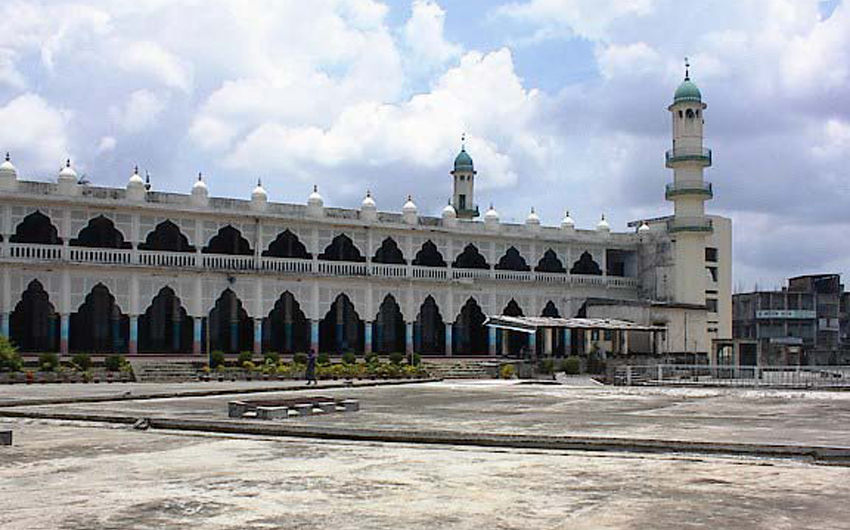
Shahi Jama-e-Masjid: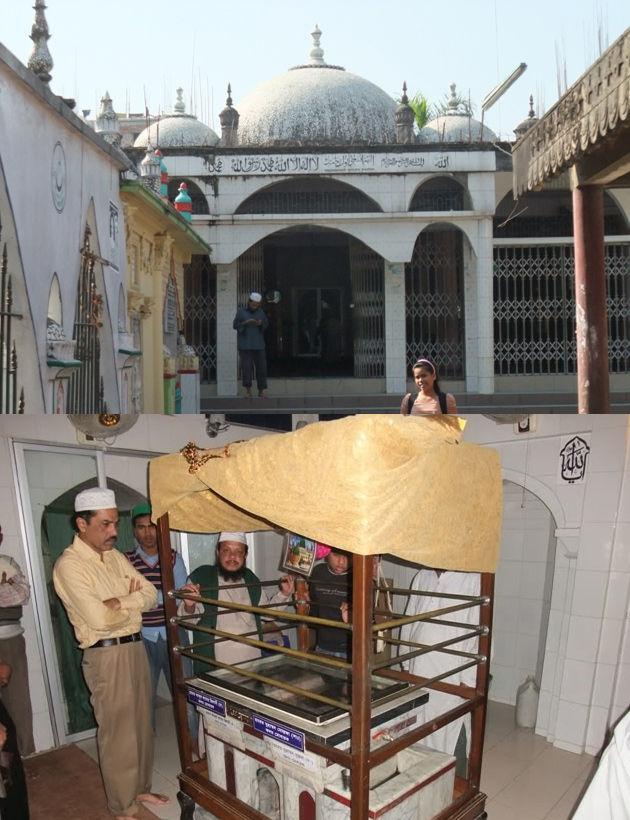
Qadam Mubarak Masjid:
Jamiatul Falah Mosque: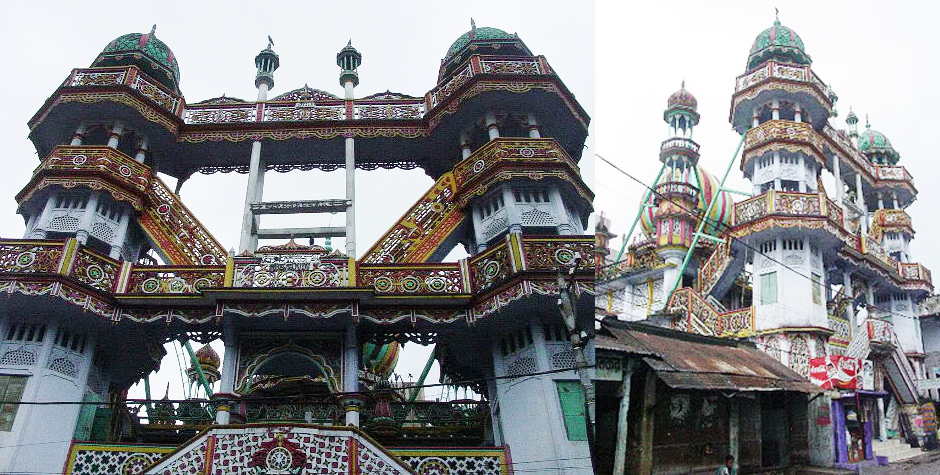
Chandanpura Masjid: Situated in the old city, the multi domed mosque is an architectural sight to behold.Natural beauty
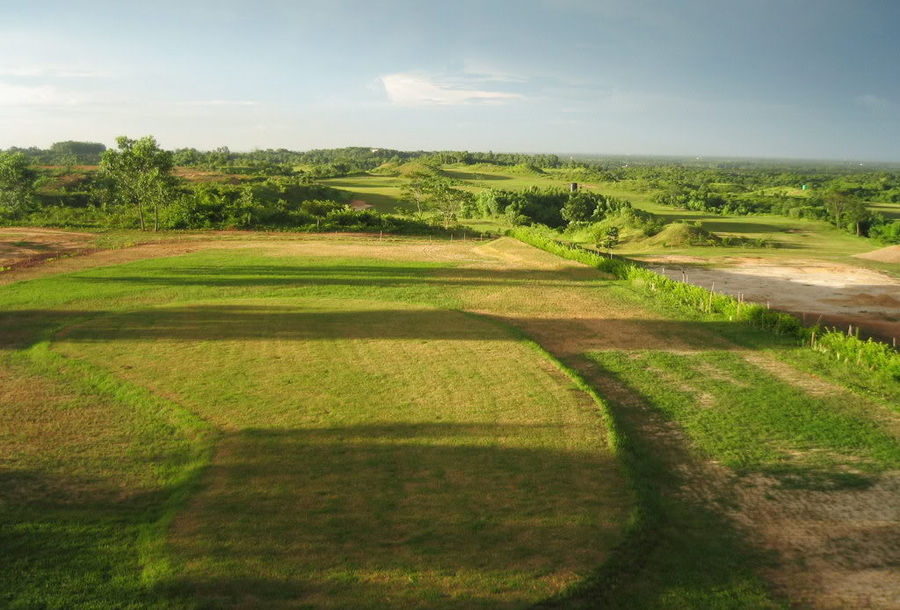
Chittagong Hill Tracts: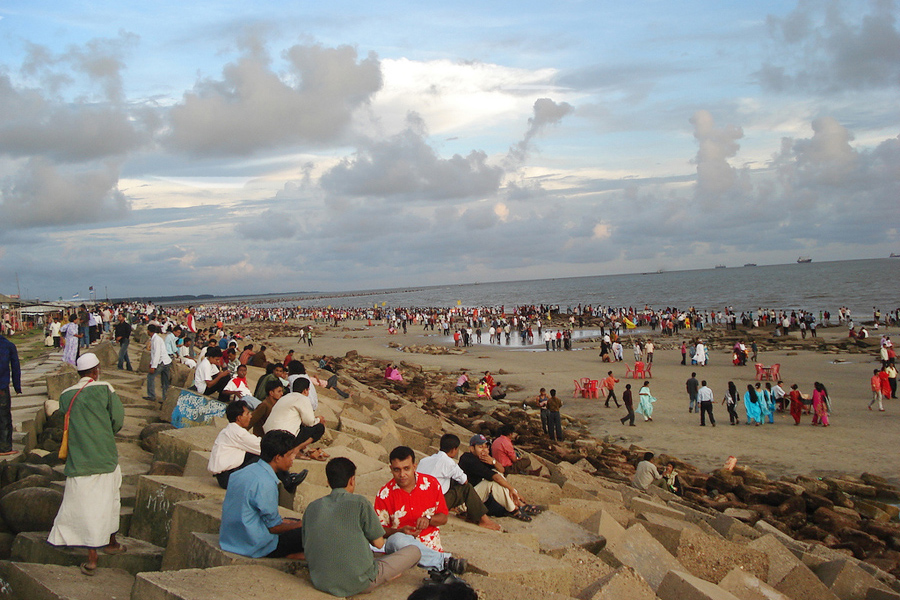
Patenga beach:
Foy's Lake: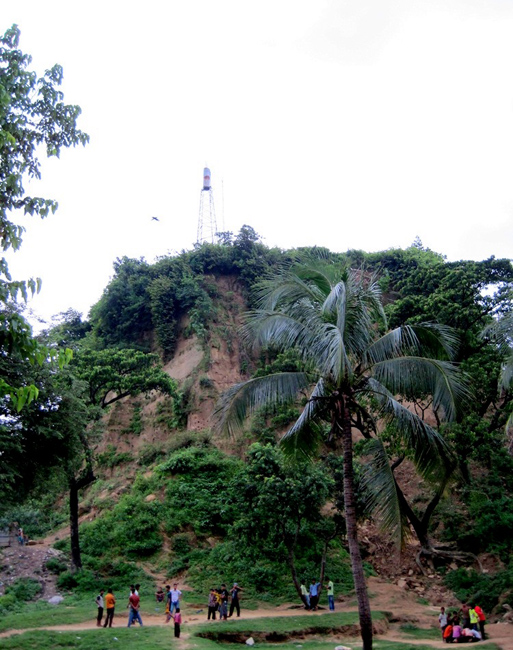
Batali Hill: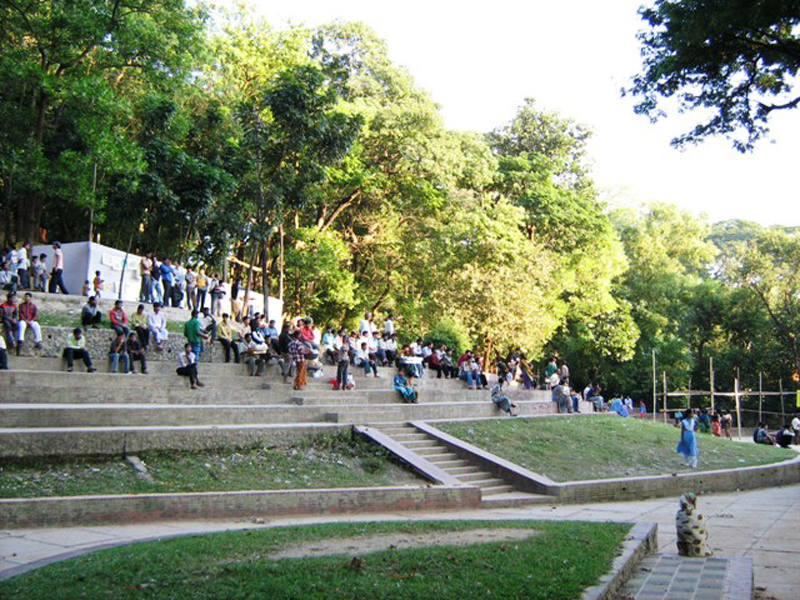
D.C. Hill:
Sitakunda: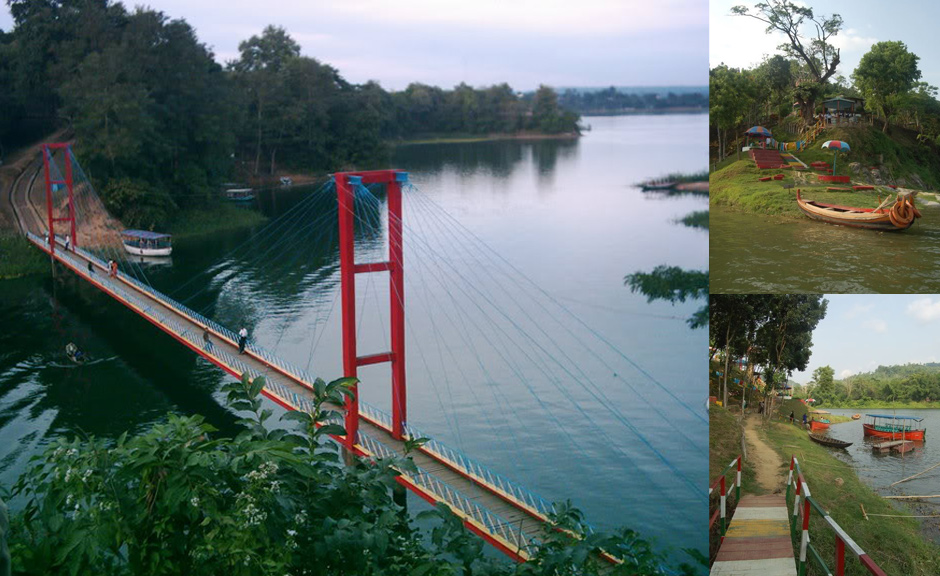
Kaptai Lake:Chittagong landmarks
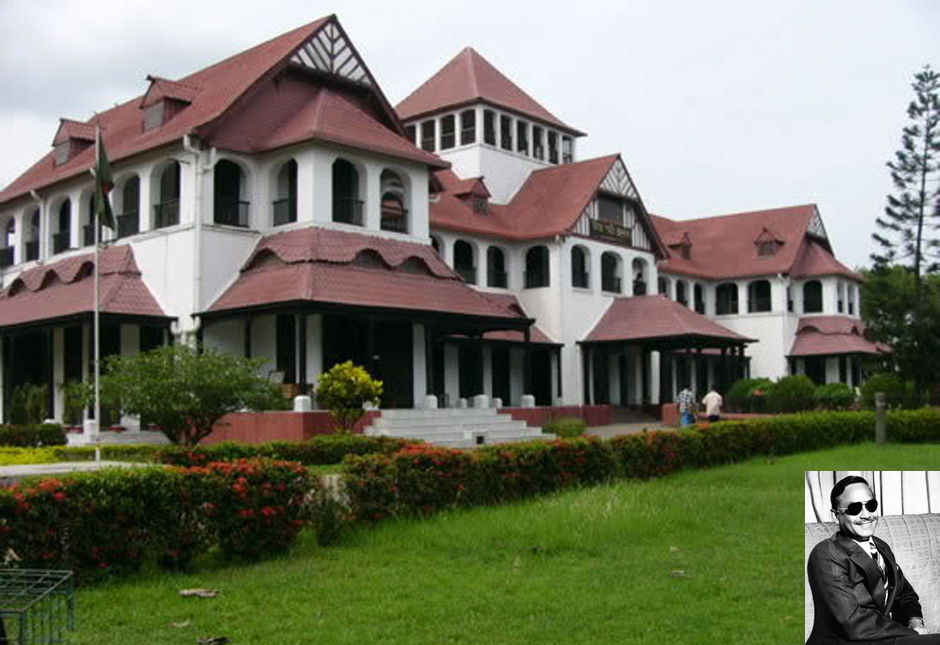
Zia Memorial Museum (Chittagong Circuit house):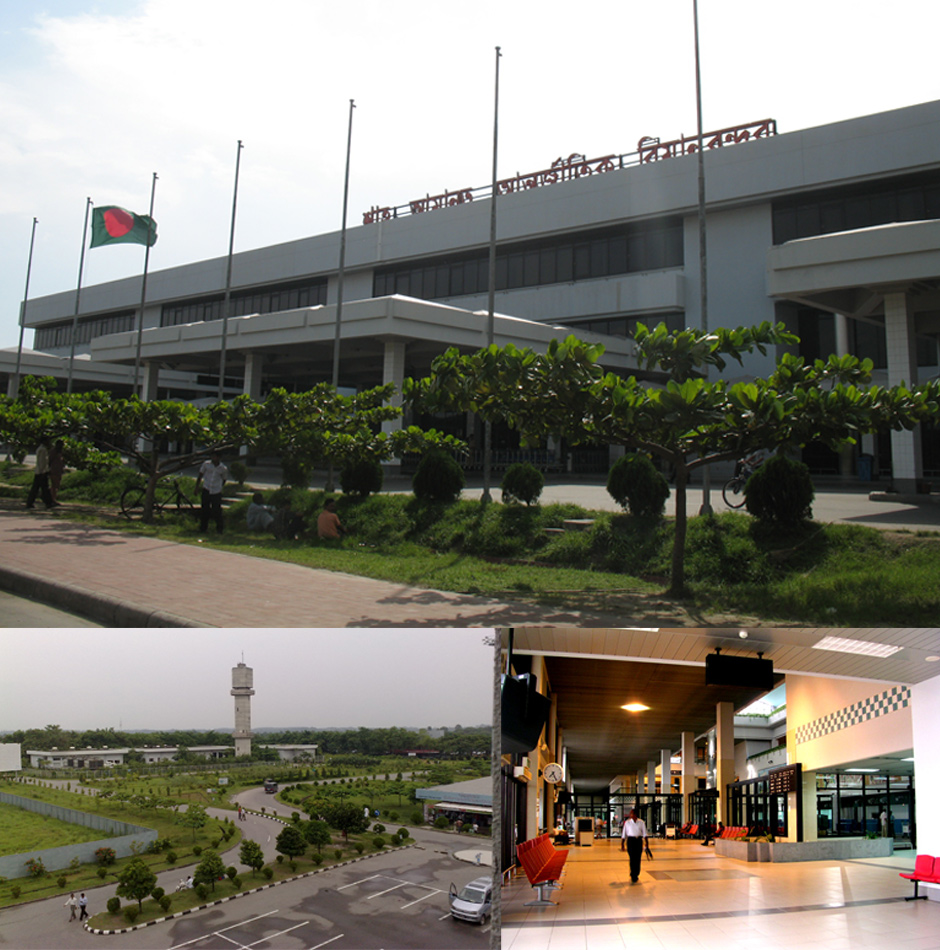
Shah Amanat International Airport: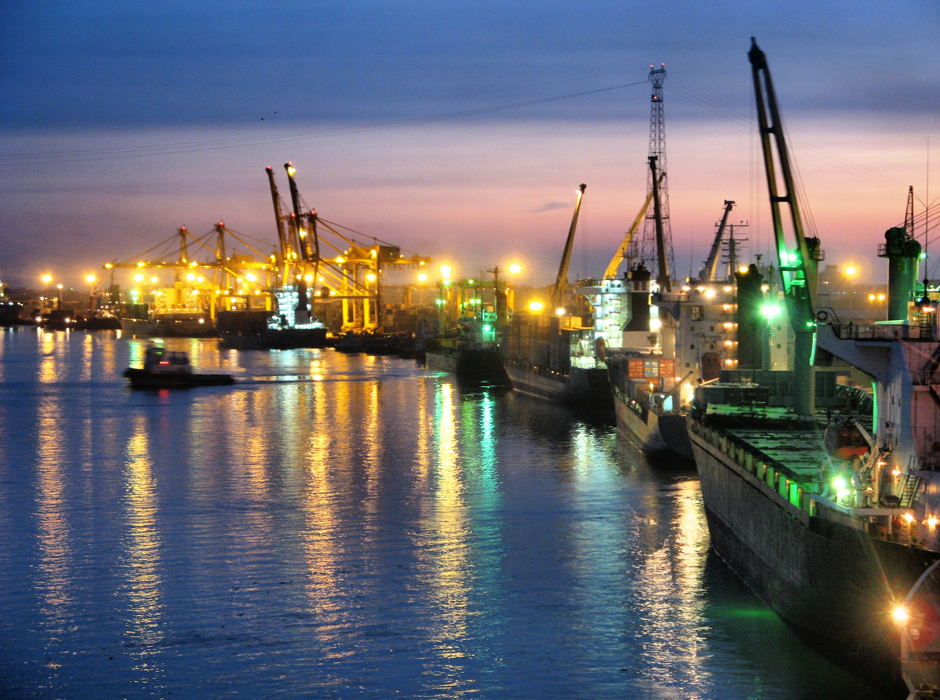
Port of Chittagong: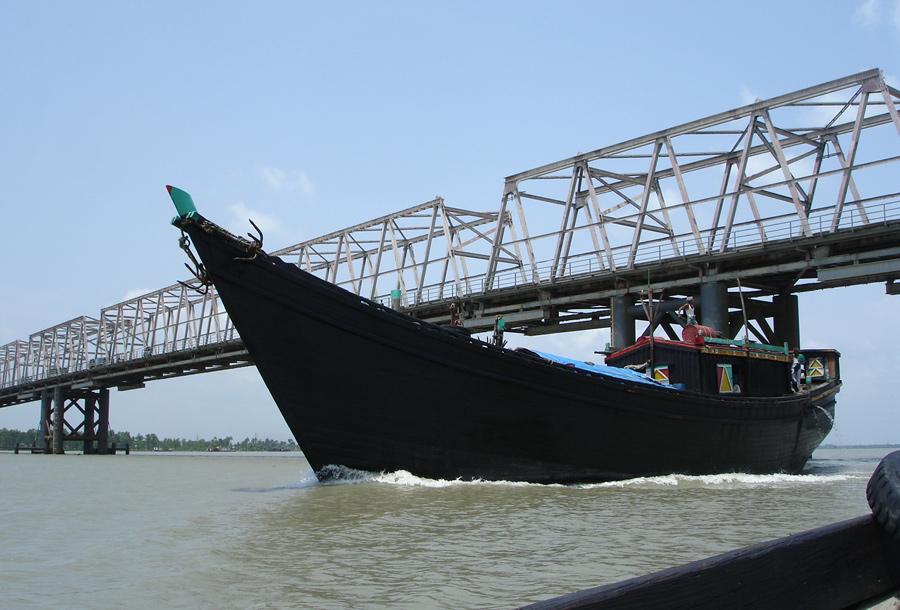
Karnaphuli Bridge:Chittagong parks & stadiums
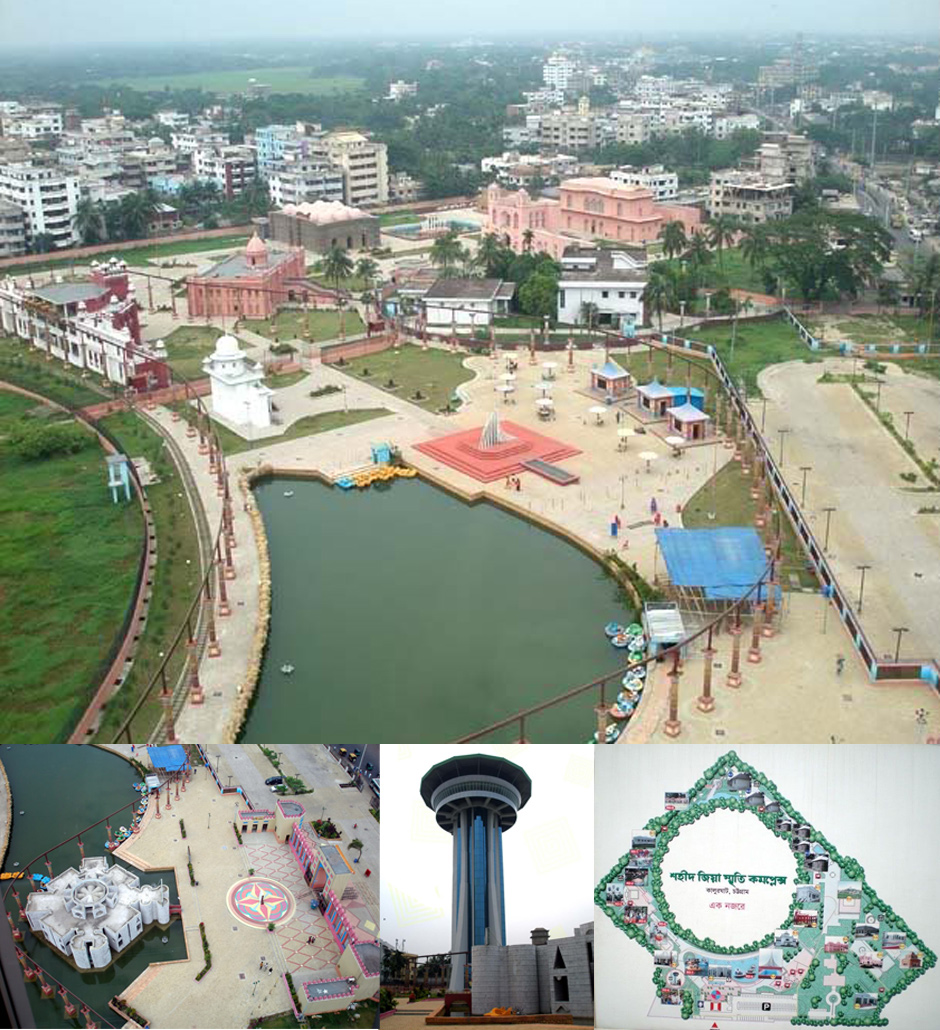
Shaheed Zia Memorial Complex and Mini Bangladesh: The Zia Memorial Complex in Chittagong, known as Mini Bangladesh, is set to open to the visitors from Monday. The prime minister, Khaleda Zia, is expected to inaugurate the complex, constructed at a cost of Tk 65 crore at the city’s Kalurghat Radio Transmission Centre area from where the proclamation of the country’s independence was broadcast in 1971. The visitors will get chance of visiting almost all the archaeological installations of the country as their replicas have been set up there. The workers were found busy on Tuesday to give the finishing touch on the miniature models of the national assembly (Jatiya Sangsad) building, Central Shaheed Minar, Curzon Hall, Ahsan Manzil, Darbar Hall, and South Gate of Lalbagh Fort in Dhaka, National Martyrs’ Memorial in Savar, St Nicolas Church in Gazipur, Kantaji Temple in Dinajpur, Buddhist Temple in Paharpur, Chhota Kutir and Bara Kutir in Rajshahi and Shat Gambuj Mosque in Khulna. A number of rides for the children, including cable car and electric train, also have been set up in the complex, and a 71-metre high watchtower is being constructed at an extra cost of Tk 9 crore. Abu Taher, superintendent engineer of the housing and settlement department, said a revolving restaurant would be set up at the 52-metre height of the tower, from where the visitors would be able to enjoy the eye-catching scenario of the complex as well as the city. The watchtower is scheduled to be completed by next three months he said. The department sources said the implementation of the project was initiated on December 5 in 2004 and the construction work was scheduled to be completed by June 2006. But the project had been implemented earlier than the stipulated period as the government was willing to inaugurate the complex before the expiry of its current tenure, sources added. http://www.skyscrapercity.com/showthread.php?t=136288&page=3 Prime Minister Khaleda Zia inaugurated the theme park constructed at a cost of Tk 188 crore in three years on August 29. The monuments in the park include Jatiya Smriti Saudha and Central Shaheed Minar, historical structures - Jatiya Sangsad, Ahsan Manjil, Mohasthangar, Paharpur Bouddha Bihar, Chhoto Sona Masjid of Rajshahi, Chhoto Kuthi, Boro Kuthi, Lalbagh Kella, Saint Nicolas Church, Kantazir Mandir of Dinajpur, Curzon Hall and the Supreme Court. All replicas perfectly resemble the original structure or monument they represent. The rides offered to the visitors include magic Swing, bumper Car, family coaster, bumper boat, pedal boat and the monorail. Besides, there are setup models of traditional village, tribal village, library, information centre and restaurant. The traditional and tribal villages will offer a rural taste to visitors, particularly those from the urban areas. They will also create a scope for the new generations to be introduced to the lifestyle and the customs of rural people. A revolving restaurant on an eye-catching 71-meter tower will help the visitors to enjoy the view of the Chittagong city. It has been set up on a 14-metre steel plate. The restaurant along with the customers will move slowly and take 90 minutes to complete a single round centring the tower. The park will remain open from 10:00am to 9:00pm everyday. The price of ticket has been fixed at Tk 50 for an adult and Tk 25 for a child with three feet height while the children below that height will be allowed to enter the park free of cost. A tight security arrangement has been made for the park where 125 staff and employees will man the gates and take care of the rides. The park also has a huge parking lot with a capacity of 450 vehicles in front of the complex. The park authorities have started working in a room inside the replica of Ahsan Manjil on the north of the complex. The replica also houses a library enriched with different types of books, including audio-visual system. A 500-seat Darbar Hall has also been set up in the Lalbagh Fort to be rented out to hold functions. AKM Moin Aziz, chief executive officer of Concord, said they constructed the park considering the financial condition of the visitors of all classes. "People, who are not able to visit all over the Bangladesh to know about the historical monuments and structures, will have the opportunity to have a total idea and view of them making a single visit to this park," he added. "No musical concert would be allowed here which might disturb the residents of the adjoining Chandgaon areas," he added. http://www.skyscrapercity.com/showthread.php?t=136288&page=6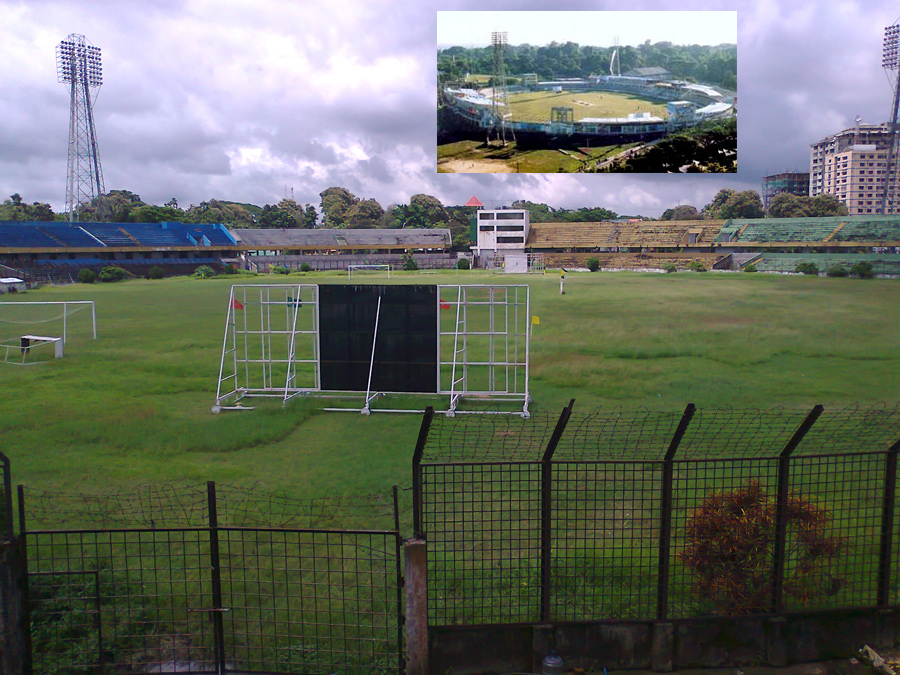
MA Aziz Stadium:
:
:Others:
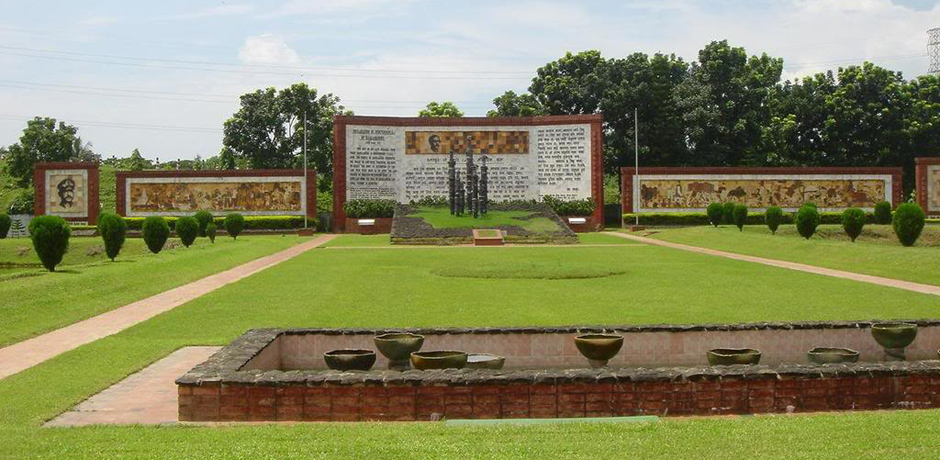
Declaration of Independence Monument: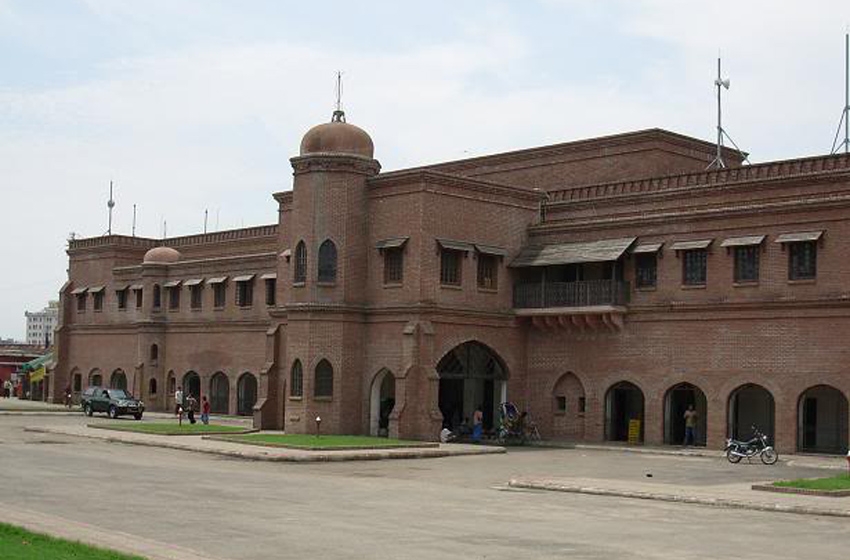
Chittagong Railway Station:
Chittagong Ethnological Museum: The Chittagong Ethnological Museum, the country’s lone ethnological museum, offers the visitors the chance to acquaint with the lifestyles and heritage of various ethnic groups of the country. The museum authorities had collected rare elements used in everyday lives of different ethnic groups, of which some had already become extinct while some were on the verge of extinction. Three galleries of the museum feature diverse elements of 25 ethnic groups, including Chakma, Marma, Tongsinga, Khumi, Murang, Sautal, Garo, Chak, Monipuri, Palia, Tipra, Hajang, Lusai, Shimuji, and Bom while the rest gallery displays the lifestyles of some racial groups of India, Pakistan, and Australia. The sculptures of the people of different ethnic communities and a piece of broken Berlin Wall draw the visitors especially the children who can get impression of different festivals, livelihoods, and cultures of the communities from the murals set up at the hall room. Rakhi Roy, research assistant of the museum, said people between 200 and 300 visits the museum every day in addition to a number of researchers from home and abroad. ‘We make arrangements for the school and college students free of cost upon the requests from the institutions, and three to four institutions in the city take this opportunity every month.’ She also informed that there are only two ethnological museums in Asia —one in Chittagong and the other at Tokyo in Japan. The Chittagong Ethnological Museum established in 1965 remains open to the visitors from 10:00am to 5:00pm except Sunday. http://www.skyscrapercity.com/showthread.php?t=136288&page=3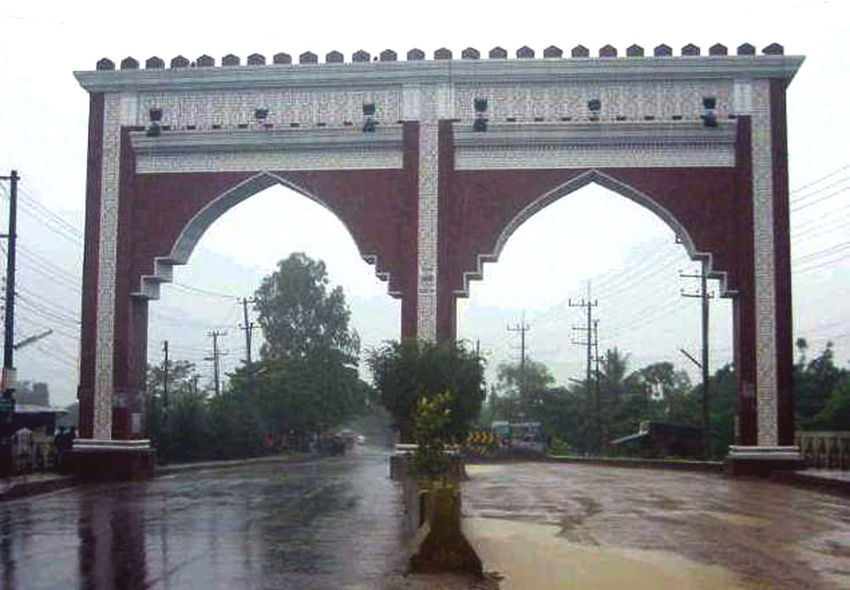
Chittagong Gates: greets you as you drive to the city from the airport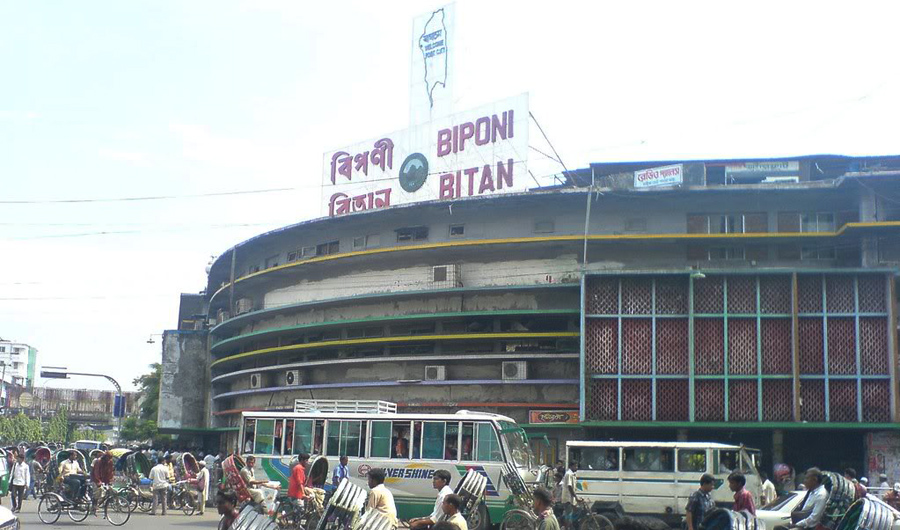
Biponi Bitan: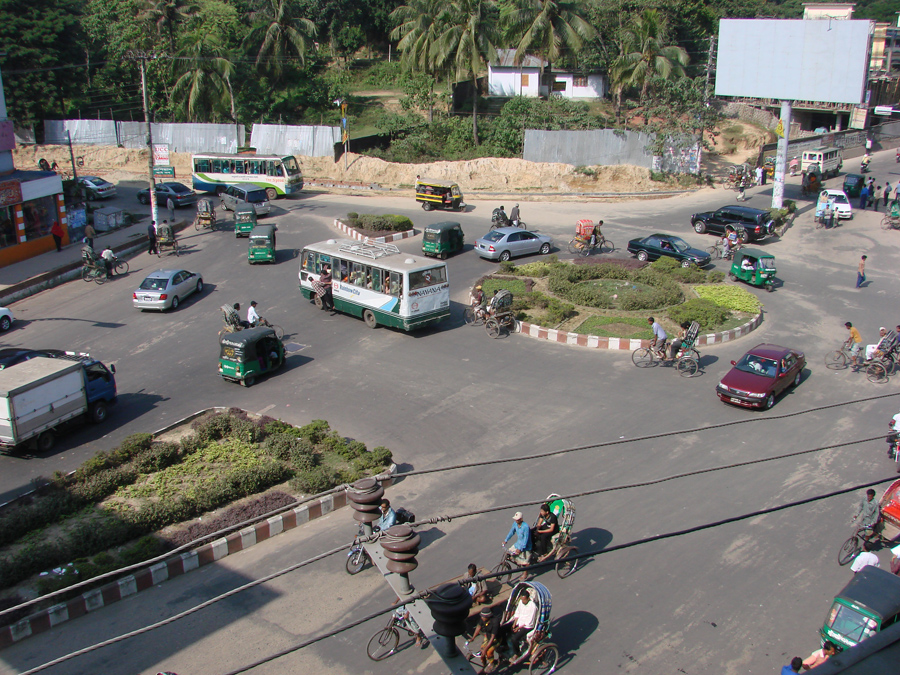
Probortok Circle: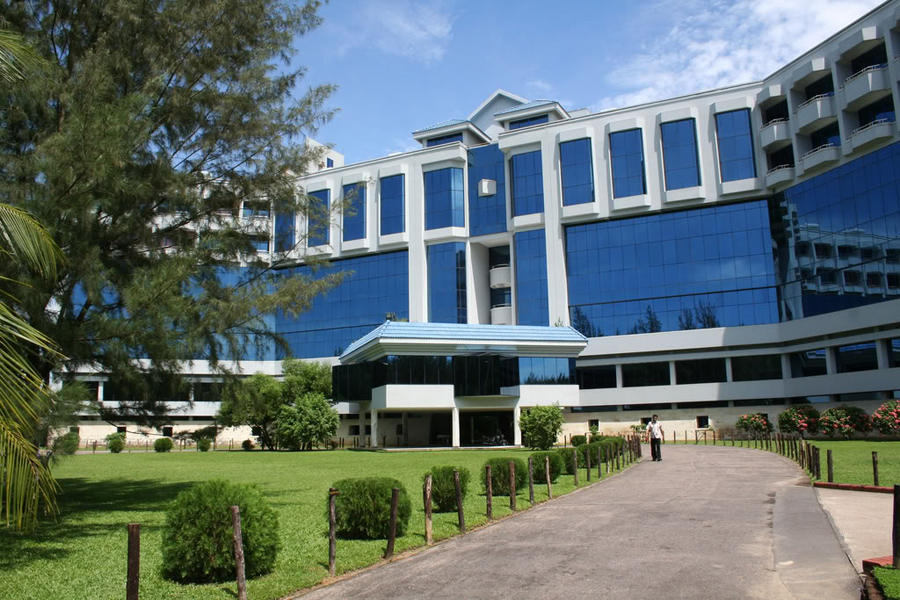
Hotel Seagull: -
-
-
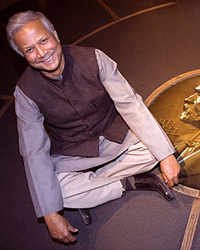 Muhammad Yunus (Born 28 Jun 1940) Bangladeshi economist and founder of Grameen Bank which provides microcredit (small loans to poor people). Both Grameen Bank and Muhammad Yunus won Nobel Peace Prize in 2006 - first Bangladeshi and third Bengali to ever get a Nobel Prize. Born in village of Bathua, Chittagong. Third of nine children of Haji Dula Mia Shoudagar and Sufia Khatun. Father was a jeweler, and mother suffered from psychological illness by 1949. Received degree (1960) and masters (1961) in economics from Dhaka University and appointed lecturer in Chittagong College. Received Fulbright Scholarship in 1965 to study in United States and obtained PhD in economics from Vanderbilt University Graduate Program in Economic Development (GPED) in 1971. Assistant professor of economics at Middle Tennessee State University in Murfreesboro (1969 - 1972). Campaigned in US for Bangladesh's liberation in 1971. Returned home and set up various rural economic program while head of Economics department of Chittagong University. Led to formation of Grameen Bank (Village Bank) in 1983. Won countless awards including Swadhinata Purushkar (1987), US Presidential Medal of Freedom (2009), King Abdul Aziz medal (2007), Ramon Magsaysay Award (1984), World Food Prize (1994), and multiple honorary doctorate degrees from universities across the world (e.g. Argentina, Bangladesh, Belgium, Costa Rica, India, Italy, Japan, Lebanon, Malaysia, Russia, South Africa, UK, USA and Peru). Voted 2nd in Prospect Magazine's 2008 global poll of the world's top 100 intellectuals. In January 2008, Houston, Texas declared 14 January as "Muhammad Yunus Day". Embroiled in controversies regarding microfinance and management role within bank. Married a Bengali after first marriage to a Russian-American ended in separation. A daughter from each of the two marriages. Work now carried out by think tank Yunus centre.
Muhammad Yunus (Born 28 Jun 1940) Bangladeshi economist and founder of Grameen Bank which provides microcredit (small loans to poor people). Both Grameen Bank and Muhammad Yunus won Nobel Peace Prize in 2006 - first Bangladeshi and third Bengali to ever get a Nobel Prize. Born in village of Bathua, Chittagong. Third of nine children of Haji Dula Mia Shoudagar and Sufia Khatun. Father was a jeweler, and mother suffered from psychological illness by 1949. Received degree (1960) and masters (1961) in economics from Dhaka University and appointed lecturer in Chittagong College. Received Fulbright Scholarship in 1965 to study in United States and obtained PhD in economics from Vanderbilt University Graduate Program in Economic Development (GPED) in 1971. Assistant professor of economics at Middle Tennessee State University in Murfreesboro (1969 - 1972). Campaigned in US for Bangladesh's liberation in 1971. Returned home and set up various rural economic program while head of Economics department of Chittagong University. Led to formation of Grameen Bank (Village Bank) in 1983. Won countless awards including Swadhinata Purushkar (1987), US Presidential Medal of Freedom (2009), King Abdul Aziz medal (2007), Ramon Magsaysay Award (1984), World Food Prize (1994), and multiple honorary doctorate degrees from universities across the world (e.g. Argentina, Bangladesh, Belgium, Costa Rica, India, Italy, Japan, Lebanon, Malaysia, Russia, South Africa, UK, USA and Peru). Voted 2nd in Prospect Magazine's 2008 global poll of the world's top 100 intellectuals. In January 2008, Houston, Texas declared 14 January as "Muhammad Yunus Day". Embroiled in controversies regarding microfinance and management role within bank. Married a Bengali after first marriage to a Russian-American ended in separation. A daughter from each of the two marriages. Work now carried out by think tank Yunus centre.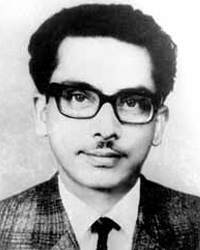 Shahidullah Kaiser (16 Feb 1927 - 14 Dec 1971) Journalist and novelist. Born in village of Mazupur, in present-day Feni District as Abu Nayeem Mohammad Shahidullah. Father Maulana Mohammad Habibullah was principal of Dhaka Aliya Madrasah and younger brother, Zahir Raihan, was a noted filmmaker and writer. Obtained degree in economics from Presidency College, Kolkata (1946). Enrolled in Master of Arts in economics at Calcutta University but did not complete it. Political activist from student days. Worked as journalist in 1949 with Ittefaq in Dhaka and participated in Bhasha Andolon (Language Movement) for which he was arrested in 1952 and jailed for three-and-half years. Released 1955 and re-arrested on a political crackdown on activists. Released few years later. Joined as associate editor of Bengali daily Sangbad in 1958 where he worked for rest of his life. Jailed that same year when military leader Ayub Khan came into power and remained in jail till September 1962. Literary work include Sareng Bau (1962), Rajbandir Rojnamacha (1962), Sangshaptak (1965), Peshwar Theke Tashkhand (1966), Krishnachura Megh, Timir Balay, Digante Phuler Agun, Samudra O Trsna, Chandrabhaner Kanya, and the unfinished Kabe Pohabe Bibhabari. Awarded Adamjee Literary Award (1962), Bangla Academy Literary Award (1962), Ekushey Padak (posthumously in 1983), and Swadhinata Purushkar (posthumously in 1998). During Swadinata Juddho of 1971 he collected medicine and food and delivered them to various posts for Freedom Fighters. Picked up on 14 December 1971, two days before Bangladesh's liberation, by Pakistan Army and its local collaborators as part of their plan to kill leading Bengali intellectuals. He never returned nor was his body ever found. Brother Zahir Raihan also disappeared while searching for him. In November 2013 Chowdhury Mueen-Uddin, a Muslim leader based in London, and Ashrafuz Zaman Khan, based in the US, were sentenced in absentia by Bangladesh court for abducting and murdering 18 people in December 1971, including Shahidullah Kaiser. Chowdhury Mueen-Uddin denied all charges. Initially married Zohra Khatun, a communist activist and daughter of minister and physician R. Ahmed of West Bengal. Divorced and married Panna Chowdhury in 1969. Panna was also an author and novelist who served as a member of parliament (1996 - 2001) for Awami League government. Daughter Shomi Kaiser a famous TV actress, while son Amitav Kaiser is a banker.
Shahidullah Kaiser (16 Feb 1927 - 14 Dec 1971) Journalist and novelist. Born in village of Mazupur, in present-day Feni District as Abu Nayeem Mohammad Shahidullah. Father Maulana Mohammad Habibullah was principal of Dhaka Aliya Madrasah and younger brother, Zahir Raihan, was a noted filmmaker and writer. Obtained degree in economics from Presidency College, Kolkata (1946). Enrolled in Master of Arts in economics at Calcutta University but did not complete it. Political activist from student days. Worked as journalist in 1949 with Ittefaq in Dhaka and participated in Bhasha Andolon (Language Movement) for which he was arrested in 1952 and jailed for three-and-half years. Released 1955 and re-arrested on a political crackdown on activists. Released few years later. Joined as associate editor of Bengali daily Sangbad in 1958 where he worked for rest of his life. Jailed that same year when military leader Ayub Khan came into power and remained in jail till September 1962. Literary work include Sareng Bau (1962), Rajbandir Rojnamacha (1962), Sangshaptak (1965), Peshwar Theke Tashkhand (1966), Krishnachura Megh, Timir Balay, Digante Phuler Agun, Samudra O Trsna, Chandrabhaner Kanya, and the unfinished Kabe Pohabe Bibhabari. Awarded Adamjee Literary Award (1962), Bangla Academy Literary Award (1962), Ekushey Padak (posthumously in 1983), and Swadhinata Purushkar (posthumously in 1998). During Swadinata Juddho of 1971 he collected medicine and food and delivered them to various posts for Freedom Fighters. Picked up on 14 December 1971, two days before Bangladesh's liberation, by Pakistan Army and its local collaborators as part of their plan to kill leading Bengali intellectuals. He never returned nor was his body ever found. Brother Zahir Raihan also disappeared while searching for him. In November 2013 Chowdhury Mueen-Uddin, a Muslim leader based in London, and Ashrafuz Zaman Khan, based in the US, were sentenced in absentia by Bangladesh court for abducting and murdering 18 people in December 1971, including Shahidullah Kaiser. Chowdhury Mueen-Uddin denied all charges. Initially married Zohra Khatun, a communist activist and daughter of minister and physician R. Ahmed of West Bengal. Divorced and married Panna Chowdhury in 1969. Panna was also an author and novelist who served as a member of parliament (1996 - 2001) for Awami League government. Daughter Shomi Kaiser a famous TV actress, while son Amitav Kaiser is a banker. 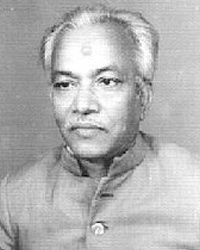 Mohammad Abul Kashem (28 Jun 1920 – 11 Mar 1991) Eminent educationist, politician, and author. Popularly known as 'Principal Abul Kashem'. A pioneer and architect of historic Bhasha Andolon (Language Movement of Bangladesh). Born in village of Cheebandy-Barama, Chandanaish Upazila of Chittagong district. Obtained degree (1944) and Masters (1945) in Physics from Dhaka University. Completed Master's thesis under supervision of famous Mathematician and Physicist Satyendra Nath Bose. Began career as lecturer in Physics deparment of DU (1946 - 1953) and was first person to deliver lectures in Bengali at DU. Campaigned for recognition of Bangla as a state language of newly formed Pakistan, founded weekly Sainik which acted as mouthpiece, and was a public leader. A founder of Tamaddun Majlish, a Islamic-oriented Bengali cultural organization, and later a member of the Legislative Assembly. Established Bangla College at Mirpur, Dhaka (1962) and served as Principal till 1981, and was forerunner in introducing textbooks in Bengali for higher education and contributed much in initiating the Bengali version of the question papers for higher education. Authored nearly 100 books including textbooks on science for postgraduate student and on education, Islam, culture and politics. Recipient of multiple awards including Writers Guild Award (1964), Bangla Academy Award (1982), Ekushey Padak (1987), Islamic Foundation Award (1988), Swadhinata Purushkar (posthumously in 1993). Accorded a national reception in Dhaka in 1989, attended by eminent scholars and litterateurs of Bangladesh and India. In 2007, Dhaka City Corporation named former Darussalam Road of Mirpur-1 as 'Bhasha Sainik Principal Abul Kashem Road' in his recognition. Died at Suhrawardy Hospital, Dhaka.
Mohammad Abul Kashem (28 Jun 1920 – 11 Mar 1991) Eminent educationist, politician, and author. Popularly known as 'Principal Abul Kashem'. A pioneer and architect of historic Bhasha Andolon (Language Movement of Bangladesh). Born in village of Cheebandy-Barama, Chandanaish Upazila of Chittagong district. Obtained degree (1944) and Masters (1945) in Physics from Dhaka University. Completed Master's thesis under supervision of famous Mathematician and Physicist Satyendra Nath Bose. Began career as lecturer in Physics deparment of DU (1946 - 1953) and was first person to deliver lectures in Bengali at DU. Campaigned for recognition of Bangla as a state language of newly formed Pakistan, founded weekly Sainik which acted as mouthpiece, and was a public leader. A founder of Tamaddun Majlish, a Islamic-oriented Bengali cultural organization, and later a member of the Legislative Assembly. Established Bangla College at Mirpur, Dhaka (1962) and served as Principal till 1981, and was forerunner in introducing textbooks in Bengali for higher education and contributed much in initiating the Bengali version of the question papers for higher education. Authored nearly 100 books including textbooks on science for postgraduate student and on education, Islam, culture and politics. Recipient of multiple awards including Writers Guild Award (1964), Bangla Academy Award (1982), Ekushey Padak (1987), Islamic Foundation Award (1988), Swadhinata Purushkar (posthumously in 1993). Accorded a national reception in Dhaka in 1989, attended by eminent scholars and litterateurs of Bangladesh and India. In 2007, Dhaka City Corporation named former Darussalam Road of Mirpur-1 as 'Bhasha Sainik Principal Abul Kashem Road' in his recognition. Died at Suhrawardy Hospital, Dhaka.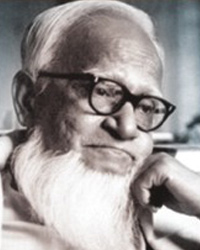 Abul Fazal (1 Jul 1903 – 4 May 1983) Writer and educationist.
Abul Fazal (1 Jul 1903 – 4 May 1983) Writer and educationist. 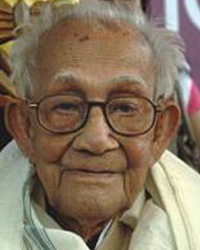 Binod Bihari Chowdhury (10 Jan 1911 - 10 Apr 2013) A revolutionary and veteran member of the civil society of Bangladesh. Famous for participating in the Chittagong Armoury Raid to uproot the British colonial rule from the Indian subcontinent in 1930.
Binod Bihari Chowdhury (10 Jan 1911 - 10 Apr 2013) A revolutionary and veteran member of the civil society of Bangladesh. Famous for participating in the Chittagong Armoury Raid to uproot the British colonial rule from the Indian subcontinent in 1930.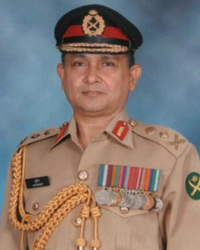 Muhammad Abdul Mubeen (Born 1955) Chief of Bangladesh Army Staff.
Muhammad Abdul Mubeen (Born 1955) Chief of Bangladesh Army Staff. Pritilata Waddedar (5 May 1911 – 23 Sept 1932) First woman freedom fighter of the anti-British movement in India.
Pritilata Waddedar (5 May 1911 – 23 Sept 1932) First woman freedom fighter of the anti-British movement in India.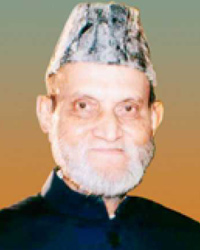 Abdul Kuddus Choudhury (1926 - 20 May 2010) Justice and secretary of the law, justice and parliamentary affairs ministry.
Abdul Kuddus Choudhury (1926 - 20 May 2010) Justice and secretary of the law, justice and parliamentary affairs ministry. Ghulam Sarwar (Born 1945) Founder and Director of Muslim Education Trust in London, UK. Author of 'Islam: beliefs and teachings', 'British Muslims and Schools', and 'Sex Education - The Muslim Perspective' amongst others. Completed Masters in Business Management from University of Dhaka, and is a member of Royal Society of Arts.
Ghulam Sarwar (Born 1945) Founder and Director of Muslim Education Trust in London, UK. Author of 'Islam: beliefs and teachings', 'British Muslims and Schools', and 'Sex Education - The Muslim Perspective' amongst others. Completed Masters in Business Management from University of Dhaka, and is a member of Royal Society of Arts. Mufti Faizullah (1892 - 1976) Poet and writer
Mufti Faizullah (1892 - 1976) Poet and writer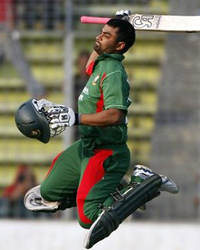 Tamim Iqbal (Born 20 Mar 1989) International cricketer.
Tamim Iqbal (Born 20 Mar 1989) International cricketer.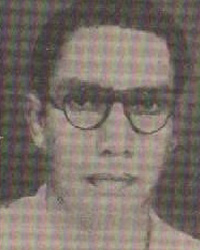 Ananta Singh (1903 - 1979) A revolutionary, politician and one of the major participants in the looting of the Chittagong Armoury.
Ananta Singh (1903 - 1979) A revolutionary, politician and one of the major participants in the looting of the Chittagong Armoury.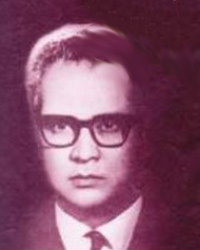 Syed Waliullah (1922 – 1971) Novelist, short-story writer and playwright.
Syed Waliullah (1922 – 1971) Novelist, short-story writer and playwright.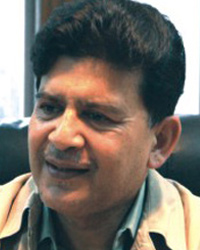 Hossain Zillur Rahman (Born) Academic, economist and policy maker.
Hossain Zillur Rahman (Born) Academic, economist and policy maker.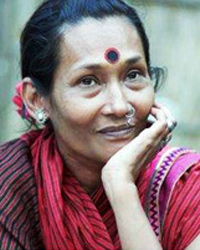 Bibi Russell () Fashion designer and former international model.
Bibi Russell () Fashion designer and former international model.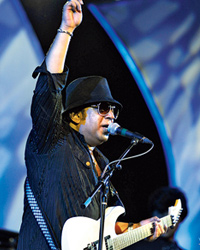 Ayub Bachchu (Born 16 Aug 1962) Musician, singer, and lyricist, best known as a founding member and leader of rock band LRB (Love Runs Blind).
Ayub Bachchu (Born 16 Aug 1962) Musician, singer, and lyricist, best known as a founding member and leader of rock band LRB (Love Runs Blind).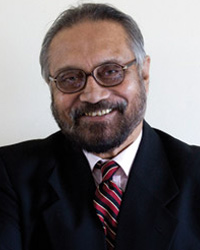 Aly Zaker (Born 6 Nov 1944) Actor, director in Bangladeshi National Television drama and theatre. One of the trustees of Liberation War Museum.
Aly Zaker (Born 6 Nov 1944) Actor, director in Bangladeshi National Television drama and theatre. One of the trustees of Liberation War Museum.
Important information
- Chittagong's Official website: www.ccc.org.bd
- Shah Amanat Airport telephone: 741532-42
- Hospital telephone:
- Railway: 843201-10
- Police Control Room: 639022
- :
May Allah bless Chittagong and our People. Ameen.

